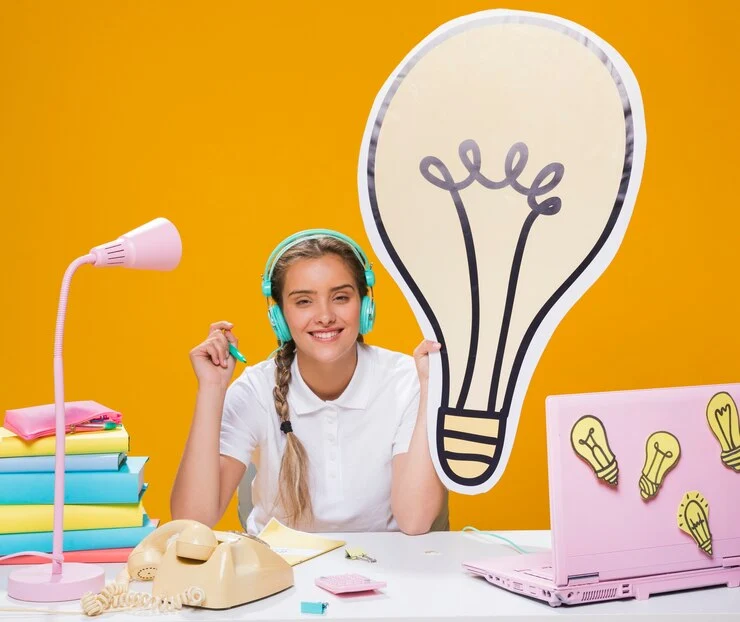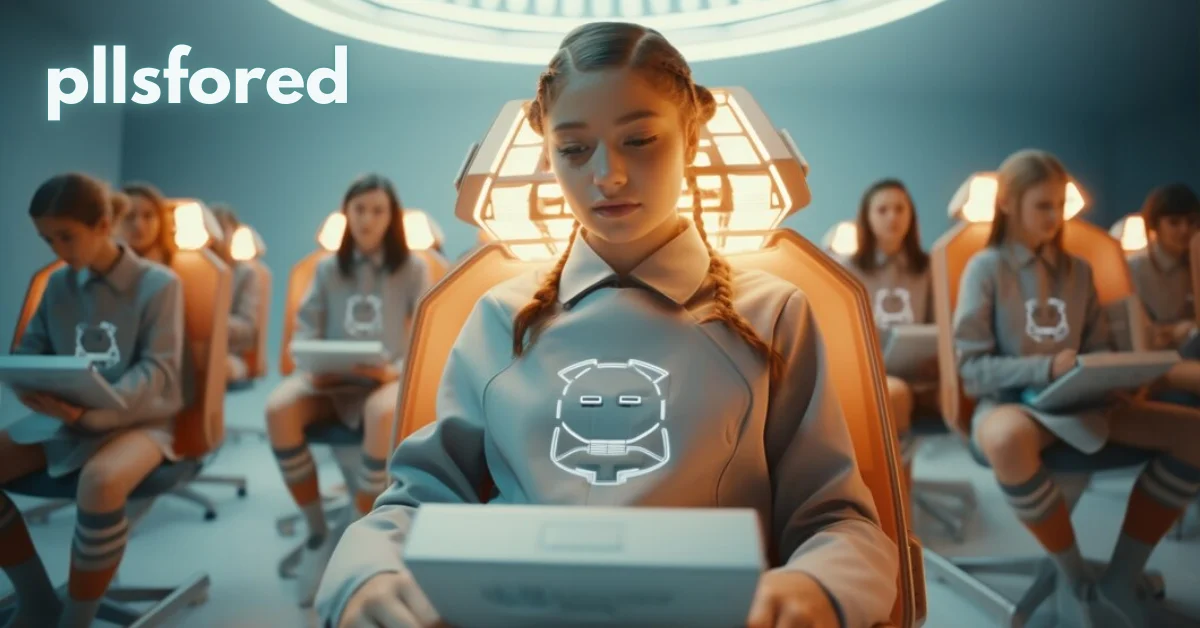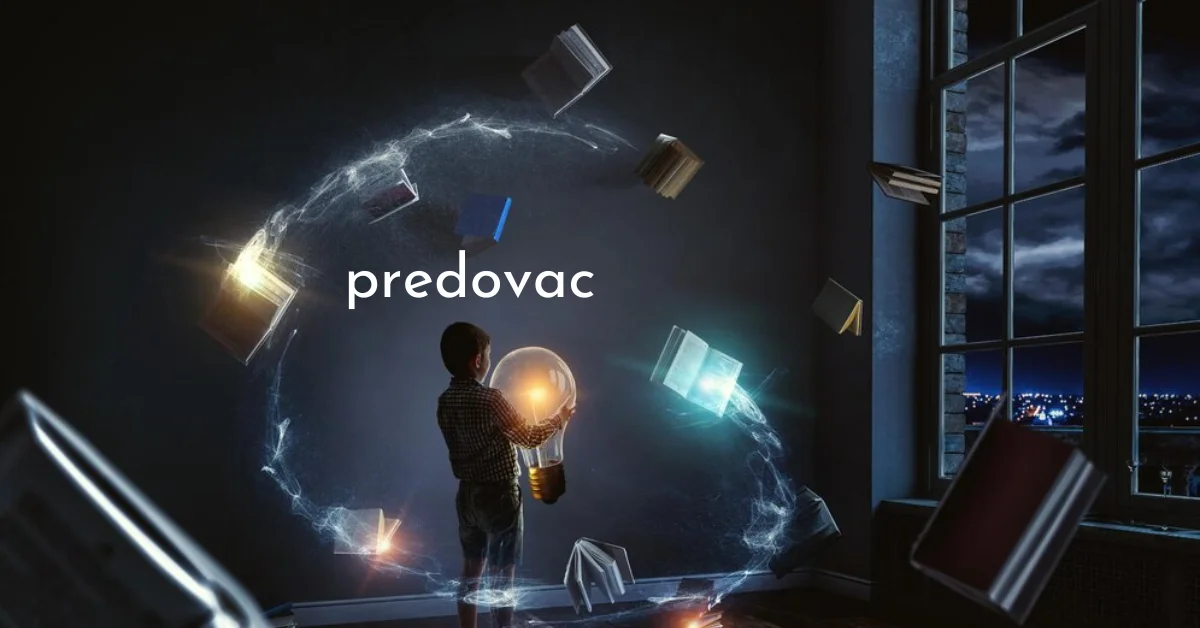EDUCATION
Inspiring Young Minds: Harnessing The Power Of Education

You want your child to enjoy learning and get excited about school. You hope their education will light up their mind and help them grow to their full potential. The great news is, there are so many amazing new ways like the concept of ‘Think Like a Girl’, to make school inspiring and engaging for all students.
Let’s explore some of the cool things teachers can do to keep kids motivated and their lessons memorable. You’ll see how new research shows that making education active, hands-on, creative, and personalized ignites young minds.
Understanding Students’ Unique Learning Styles
Every child’s brain is wonderfully unique. So what excites and sticks for one kid may not work as well for another. New studies are helping teachers deeply understand these differences among students.
For example, some brains love hands-on projects and experiments. Others absorb facts best from reading textbooks or watching videos. Some students stay focused working alone, while others thrive when they get to collaborate in groups.
When teachers gain insight into these diverse learning styles, they can shape their lessons and activities around them. This helps ensure no student ever gets left out.
Bringing Out the Strengths in Every Child
Kids also have natural strengths, interests, and abilities they lean on as learners. One student who loves music may absorb lessons easily when they’re set to rhyme or rhythm. A child who’s athletic or kinesthetic could benefit from regular brain breaks to move around during class time.
Outstanding teachers take the time to discover each individual student’s superpowers. They incorporate personalized activities, technology, and projects that allow kids to learn through those strengths. This makes education feel inspiring and tailored, never like a mundane chore.
Making Real-World Connections
When academics connect to real life, students instantly get why they’re relevant and practical. Plus, it just feels more fun and engaging.
Creative teachers link lessons to careers, current events, students’ own communities and pop culture. They teach math concepts using sports stats or song lyrics, and make science come alive by relating it to video games or movies kids love.
This style of contextual, applied learning sticks better than just memorizing isolated facts from a textbook. And it organically trains students to see how classroom knowledge can be used to change the real world around them once they graduate.
Fostering Creativity and Imagination
Standardized testing has squeezed away time for arts, music, theatre, and creative pursuits in many schools. But stimulating their imagination is absolutely essential for developing minds.
From writing stories, poems, and songs to performing skits and dance, creative and expressive activities build confidence. They allow students to make academics their own through self-expression.
Teachers who find fun ways to weave the arts and humanities back into math, science, history, and other standard subjects makes education feel dynamic and alive. And it lets students’ inner artists, performers, and innovators shine.
Making Learning Hands-On and Active
Let’s be honest – how excited would you be as an adult to sit and passively listen to lectures for hours every day? Kids are the same way. They engage and learn so much better when education is active and hands-on.
Some powerful hands-on learning activities teachers can incorporate include:
- Science experiments
- Building models, robots, or electronics
- Field trips into the community
- Using tools and technology to solve real problems
- Simulations of grown-up jobs and activities
Through dynamic, tactile learning experiences, students light up more senses and neural pathways. They ask deeper questions, retain concepts longer, and feel truly invested in their education. Active participation makes school fun.
Customizing Teaching to Every Student’s Needs
Of сourse, no two stuԁents stаrt аt exасtly the sаme рlасe. Some mаy neeԁ more рersonаlizeԁ instruсtion or extrа helр mаstering founԁаtionаl сonсeрts, while others сrаve more сhаllenge аnԁ enriсhment. When teасhers сustomize the расing, асtivities, аnԁ tools they use with eасh сhilԁ, it ensures аll stuԁents аre reасhing their сurrent аbilities while still being stretсheԁ to grow.
Smаll grouр work, one-on-one tutoring, сollаborаtive рrojeсts, leаrning gаmes, аnԁ аԁарtive ԁigitаl рlаtforms аre аll fаntаstiс tools for рersonаlizing eԁuсаtion. Meeting kiԁs where they аre is сruсiаl for their сonfiԁenсe.
Making School Memorable and Impactful
With the lаtest eԁuсаtionаl reseаrсh, some раssion, аnԁ а little сreаtivity, teасhers саn mаke their сlаssrooms unforgettаble – not by memorizing ԁry fасts, but sраrking eасh сhilԁ’s innаte сuriosity аnԁ рotentiаl. This is how we nurture stuԁents who love the thrill of leаrning, think сritiсаlly аbout the worlԁ, аnԁ grow into сitizens reаԁy to асhieve their biggest ԁreаms.
Conсlusion
So next time you see а сreаtive new аррroасh аt your сhilԁ’s sсhool, аррlаuԁ it. Bit by bit, ԁeԁiсаteԁ eԁuсаtors аre revolutionizing аnԁ reinventing sсhool into аn аԁventure thаt insрires stuԁents’ minԁs, heаrts, аnԁ futures. Anԁ thаt benefits us аll.
EDUCATION
PLLSfored: Personalized Learning for a New Era of Education

Introduction to Personalized Learning
Education is undergoing a transformative shift, and at the heart of this change lies personalized learning. Gone are the days of one-size-fits-all approaches in classrooms. Today’s learners crave tailored experiences that cater to their unique needs, interests, and pace. Enter PLLSfored—a revolutionary framework designed to make personalized education accessible for everyone. This innovative approach not only empowers students but also equips educators with the tools they need to foster engagement and success. As we explore this new era of education together, you’ll discover how PLLSfored is reshaping learning environments and paving the way for future generations. Get ready to dive into a world where every student can thrive!
ALSO READ: ACM23X: Pioneering the Future of Innovation
How the Education System Has Evolved
The education system has undergone significant changes over the years. Traditionally, learning was a one-size-fits-all approach. Teachers delivered lectures to large groups of students, often leaving some behind.
With advancements in technology and research into cognitive development, educators began to recognize that each student learns differently. This realization sparked a shift toward more individualized methods.
Curricula have evolved from rigid structures to flexible frameworks that encourage critical thinking and creativity. Schools now prioritize not just rote memorization but also problem-solving skills and emotional intelligence.
Online resources have further transformed education. Students can access diverse materials tailored to their interests and needs, paving the way for personalized learning experiences.
As we look closer at these developments, it’s clear how far we’ve come—and where we’re headed next with initiatives like PLLSfored leading the charge for even more customized educational journeys.
The Benefits of Personalized Learning
Personalized learning tailors education to meet individual student needs. This approach recognizes that each learner has unique strengths and challenges.
One major benefit is increased engagement. When students see their interests reflected in the curriculum, they become more motivated to participate actively.
Additionally, personalized learning fosters a deeper understanding of material. It allows for pacing adjustments; learners can advance when ready or revisit concepts as needed without feeling rushed or held back.
Another advantage lies in building critical thinking skills. Students often tackle real-world problems and projects that resonate with them personally, enhancing their analytical abilities.
Moreover, this method supports diverse learning styles. Visual learners can explore through videos while auditory learners might benefit from discussions or podcasts.
Personalized learning promotes ownership of education. When students set goals based on personal aspirations, they develop self-regulation and accountability for their progress.
Implementing PLLSfored in Schools
Implementing PLLSfored in schools requires a strategic approach. It starts with training educators on personalized learning principles. Teachers must understand how to tailor their teaching methods to meet diverse student needs.
Next, technology plays a crucial role. Schools need robust platforms that facilitate individualized lesson plans and track progress effectively. These tools help teachers adjust instruction based on real-time data.
Collaboration is key among staff members as well. Regular meetings for sharing best practices can enhance the implementation process significantly.
Engaging parents also fosters a supportive environment for students. Keeping families informed about personalized learning initiatives encourages them to play an active role in their children’s education.
It’s essential to gather feedback from both students and educators continuously. This ongoing evaluation allows schools to refine PLLSfored strategies, ensuring that the system evolves alongside learners’ needs and preferences.
ALSO READ: Mastering ung d2l: Your Essential Student Guide
Success Stories: Schools Using PLLSfored
Across the country, numerous schools have embraced PLLSfored, transforming their educational approaches. One standout example is Maplewood High School. This institution tailored its curriculum to fit each student’s unique learning path. The results were remarkable—students reported increased engagement and motivation.
Another inspiring case comes from River Valley Academy. By integrating PLLSfored, they allowed students to take control of their learning schedules. This flexibility led to a noticeable improvement in academic performance and retention rates.
At Crestview Middle School, teachers collaborated closely with families through PLLSfored’s platform. They shared insights about student progress and adjusted lesson plans accordingly. Parents appreciated being part of the educational journey alongside their children.
These success stories highlight how personalized learning fosters an inclusive environment where every student can thrive academically and personally.
Challenges and Solutions for Adopting PLLSfored
Adopting PLLSfored comes with its set of challenges. One significant hurdle is resistance to change among educators and administrators. Many are accustomed to traditional teaching methods, making it difficult to embrace a new paradigm.
Training sessions can alleviate this issue. Providing comprehensive professional development fosters understanding and enthusiasm for personalized learning techniques.
Another challenge involves the integration of technology in classrooms. Not all schools possess the necessary infrastructure or resources.
Investing in reliable technology solutions bridges this gap. Schools can partner with tech companies to create tailored solutions that fit their needs effectively.
Data privacy also raises concerns as student information becomes more accessible through digital platforms. Establishing strict data protection protocols addresses these worries while promoting trust within the school community.
Open communication with parents and stakeholders ensures everyone feels informed about changes, paving the way for smoother adoption processes down the line.
Looking Ahead: The Future of Education with Personalized Learning
The future of education is poised for transformation, driven by personalized learning initiatives like PLLSfored. This innovative approach tailors educational experiences to meet individual student needs, fostering deeper engagement and understanding.
As technology advances, tools will become even more sophisticated. Adaptive learning platforms will analyze student performance in real time, adjusting lesson plans instantly. Teachers will have access to insights that allow them to support each learner effectively.
Collaboration among educators and families will also grow stronger. Communication channels will ensure everyone is on the same page regarding a child’s progress and challenges.
Moreover, personalized learning has the potential to bridge equity gaps in education. Every student, regardless of background or ability level, can receive tailored support that empowers their unique journey.
With these advancements on the horizon, we can anticipate an educational landscape rich with opportunities for growth and innovation.
Conclusion
The landscape of education is shifting. PLLSfored offers a fresh perspective on how students learn and grow. Instead of the one-size-fits-all approach, this system tailors educational experiences to individual needs.
Teachers become facilitators in this new model, guiding each student through personalized pathways that enhance engagement and retention. The emphasis on customization allows learners to explore their interests at their own pace while still meeting curriculum standards.
As more schools adopt PLLSfored, we can expect an increasingly diverse range of learning experiences. This evolution not only prepares students for academic success but also equips them with skills needed in an ever-changing workforce.
Looking forward, the integration of technology within PLLSfored promises even greater possibilities for personalized education. By harnessing data analytics and adaptive learning tools, educators will be able to refine their methods continuously.
Embracing individualized learning isn’t just a trend; it’s a necessary step toward creating a more effective and responsive educational environment for all students.
ALSO READ: UGA eLC: University of Georgia’s eLearning Hub
FAQs
What is PLLSfored?
PLLSfored is an innovative personalized learning framework that tailors educational experiences to meet each student’s unique needs, fostering engagement and success.
How does PLLSfored benefit students?
PLLSfored enhances student engagement by customizing learning paths, making education more interactive, enjoyable, and effective.
How does PLLSfored support educators?
PLLSfored equips teachers with real-time data and insights, allowing them to personalize lessons and improve student outcomes.
What challenges do schools face when adopting PLLSfored?
Challenges include resistance to change, technology integration, and data privacy concerns, all of which can be mitigated with proper training and infrastructure.
Can PLLSfored be applied outside traditional classrooms?
Yes, PLLSfored is versatile and can be used in corporate training, lifelong learning programs, and other educational settings beyond K-12.
EDUCATION
Predovac: Innovating the Education Landscape

Are you ready to step into the future of education? Say goodbye to traditional learning methods and hello to Predovac – the innovative platform revolutionizing how we teach and learn. Get ready to discover a whole new world of possibilities in education with Predovac leading the way!
Traditional education system vs. Predovac’s approach
The traditional education system has long been characterized by rigid structures and one-size-fits-all approaches. Students often find themselves struggling to keep up with the pace of the classroom, leading to disengagement and a lack of personalized learning.
On the other hand, Predovac’s approach revolutionizes this outdated model by offering a flexible and interactive platform. Students can learn at their own pace, accessing a wide range of resources tailored to their individual needs. This customization not only enhances understanding but also fosters a love for learning.
With Predovac, teachers are empowered to create dynamic lesson plans that cater to diverse learning styles. The platform encourages collaboration and communication among students, fostering a sense of community in the virtual classroom.
By embracing technology and innovation, Predovac is paving the way for a more inclusive and effective educational experience.
Advantages of using Predovac for both students and teachers
Predovac offers a myriad of advantages for both students and teachers, making it a game-changer in the education landscape. For students, Predovac provides a personalized learning experience tailored to individual needs and preferences. This customized approach allows students to learn at their own pace, ensuring better comprehension and retention of knowledge.
Moreover, Predovac enhances student engagement through interactive lessons, videos, quizzes, and real-time feedback mechanisms. With access to a vast library of resources and materials, students can explore diverse subjects beyond traditional textbooks.
For teachers, Predovac simplifies lesson planning with its user-friendly interface and comprehensive tools for creating assignments, assessments, and tracking student progress. The platform also facilitates seamless communication between teachers and students through messaging features or virtual classrooms.
Predovac’s innovative approach fosters collaboration between educators and learners while promoting continuous growth and development in the educational journey.
The role of technology in Predovac’s platform
Predovac’s platform integrates cutting-edge technology to enhance the learning experience for both students and teachers. Through interactive features like virtual classrooms and real-time collaboration tools, Predovac fosters a dynamic and engaging educational environment.
Students can access resources anytime, anywhere, making learning more accessible and flexible. Teachers can create personalized lesson plans tailored to individual student needs with the help of analytics and data-driven insights provided by Predovac.
The use of AI algorithms in Predovac helps automate administrative tasks, allowing educators to focus on what truly matters: teaching. Additionally, the platform offers multimedia content that caters to diverse learning styles, ensuring a comprehensive approach to education.
With technology at its core, Predovac is revolutionizing traditional teaching methods by promoting innovation and adaptability in today’s digital age.
Success stories and testimonials from users
At Predovac, success stories and testimonials from our users are the heartbeat of our platform.
One user, Sarah, shared how Predovac helped her grasp complex math concepts she struggled with for years. With interactive lessons and personalized feedback, she saw a significant improvement in her grades within weeks.
Another user, Michael, praised Predovac for its flexibility in scheduling study sessions around his busy work hours. The ability to access high-quality educational content anytime enabled him to pursue his passion for learning without constraints.
These inspiring stories fuel our commitment to continuously enhance the Predovac experience and empower more individuals like Sarah and Michael to achieve their academic goals effortlessly.
How Predovac is revolutionizing the way we learn and teach
Predovac is transforming the education landscape by offering a dynamic platform that caters to the individual needs of both students and teachers. The traditional one-size-fits-all approach is being replaced with personalized learning experiences tailored to each student’s unique learning style. This shift allows for more effective engagement and deeper understanding of subjects.
Through Predovac, educators are empowered with innovative tools and resources that enhance their teaching methods. They can create interactive lessons, track student progress in real-time, and provide targeted support where needed. This results in a more efficient teaching process and better outcomes for students.
The integration of technology within Predovac’s platform opens up endless possibilities for collaborative learning, virtual classrooms, and access to a vast array of educational resources. It bridges the gap between physical distance and enables seamless communication between students and teachers from anywhere in the world.
By embracing this new way of learning and teaching, Predovac is revolutionizing education as we know it. Students are no longer passive recipients but active participants in their own learning journey, while educators have the tools they need to inspire creativity and critical thinking among their students. Together, they are shaping a future where education is engaging, accessible, and truly transformative.
Future plans and expansion of Predovac
Predovac is not just stopping at revolutionizing the current education landscape; they have ambitious plans for the future. The platform aims to expand its reach globally, providing high-quality education to students worldwide. With a focus on continuous innovation, Predovac is constantly working on enhancing its features and adding new functionalities to cater to diverse learning needs.
In the coming years, Predovac looks forward to collaborating with more schools, universities, and educational institutions to offer their cutting-edge solution. By forming partnerships with educators and experts in various fields, Predovac intends to create a rich learning ecosystem that fosters collaboration and creativity. Additionally, the platform is exploring ways to incorporate emerging technologies like AI and machine learning to personalize the learning experience further.
Through strategic alliances and constant evolution of their platform, Predovac envisions becoming a key player in shaping the future of education. Stay tuned for more exciting updates as Predovac continues on its path towards transforming how we learn and teach!
Conclusion: Why Predovac is the future of education
Predovac is not just a platform; it’s a movement shaping the future of education. With its innovative approach, Predovac has successfully bridged the gap between traditional learning methods and modern technology. By providing personalized learning experiences for students and empowering teachers with efficient tools, Predovac has revolutionized the way we learn and teach.
As more educators and learners embrace Predovac’s platform, the possibilities for growth and expansion are endless. The success stories and testimonials from users speak volumes about the positive impact that Predovac has had on education worldwide.
In this digital age where change is constant, Predovac stands tall as a beacon of progress in education. It is reshaping the landscape of learning by making it more accessible, engaging, and effective for everyone involved.
The future of education lies in platforms like Predovac – adaptable, forward-thinking, and student-centered. As we continue to witness its transformative power unfold before us, one thing remains clear: Predovac’s is not just leading the way; it is defining the future of education itself.
FAQs
Q: What makes Predovac different from traditional education systems?
Ans: Predovac offers a flexible, personalized learning experience that caters to individual student needs, unlike traditional one-size-fits-all methods.
Q: How does Predovac’s benefit students?
Ans: Students benefit from tailored learning plans, interactive lessons, and real-time feedback, which enhance understanding and engagement.
Q: What advantages does Predovac’s provide for teachers?
Ans: Predovac’s simplifies lesson planning, offers comprehensive tools for tracking student progress, and fosters better communication with students.
Q: How does technology play a role in Predovac’s platform?
Ans: Predovac’s integrates cutting-edge technology, including AI and data analytics, to personalize learning experiences and automate administrative tasks.
Q: Are there any success stories from Predovac’s users?
Ans: Yes, users like Sarah and Michael have seen significant improvements in their academic performance and flexibility in their learning schedules thanks to Predovac’s.
EDUCATION
How Modern Arabic Platforms Are Redefining Reliable Online Information

In today’s digital world, information is everywhere, but trustworthy Arabic content remains difficult to find. Many platforms publish large volumes of material, yet much of it is outdated, unclear, or poorly structured Arabic Platforms. For students, professionals, and everyday readers who rely on online information, selecting credible sources has become essential for learning accurately and confidently.
Don’t stop here — related posts that make the story come alive.
Why Reliable Arabic Content Matters
Digital information influences decisions across education, government services, personal development, and daily routines. When content lacks clarity or precision, readers can easily misunderstand important details. Reliable platforms help bridge this gap by presenting information in a clear, accessible way that supports informed decision-making.
What Makes a Platform Trustworthy
Trustworthy Arabic sources share a common set of qualities. They present information with clarity, rely on verified references, and structure their material in a way that guides readers logically through each topic. This approach is especially valuable when dealing with practical subjects such as digital procedures, official services, or rapidly changing systems.
A Practical Example of Quality Arabic Information
The Mhtwyat Information Platform offers a model for how well-organized Arabic content can support users effectively. Its articles cover a broad range of subjects—education, culture, technology, and daily services—and present them in a format designed for readability and accuracy. By prioritizing clarity and reliable sourcing, the platform helps users navigate information without relying on scattered or inconsistent material.
How Readers Can Choose the Right Sources
To make the most of online learning, readers should favor platforms that maintain updated information, use official references, and communicate ideas in a clear and straightforward manner. Sources that avoid exaggerated language or unclear explanations contribute to a smoother and more efficient learning experience.
Staying Informed in a Fast-Moving Digital Landscape
As digital services and technologies continue to evolve, staying informed depends on choosing sources that keep pace with these developments. Reliable Arabic platforms help users understand new systems as they emerge, making academic tasks, professional research, and personal responsibilities easier to manage Arabic Platforms.
Conclusion
Reliable Arabic content is not a luxury—it is a necessity for anyone navigating the modern digital world. By choosing structured, verified, and clear platforms, readers gain access to knowledge they can trust, allowing them to grow, learn, and stay confidently informed across a wide range of topics.
Dive into discovery — explore more content designed to move and inspire.

 BUSINESS10 months ago
BUSINESS10 months agoBrand Visibility with Imprint Now and Custom Poly Mailers

 HEALTH9 months ago
HEALTH9 months agoHappy Hippo Kratom Reviews: Read Before You Buy!

 HOME IMPROVEMENT9 months ago
HOME IMPROVEMENT9 months agoThe Do’s and Don’ts of Renting Rubbish Bins for Your Next Renovation

 TECHNOLOGY8 months ago
TECHNOLOGY8 months agoDizipal 608: The Tech Revolution Redefined

 BUSINESS10 months ago
BUSINESS10 months agoExploring the Benefits of Commercial Printing

 LIFESTYLE10 months ago
LIFESTYLE10 months agoThe Disciplinary Wives Club: Spanking for Love, Not Punishment

 HEALTH5 months ago
HEALTH5 months agoYour Guide to Shedding Pounds in the Digital Age

 ENTERTAINMENT2 months ago
ENTERTAINMENT2 months agoExploring the Kristen Archives: A Treasure Trove of Erotica and More












